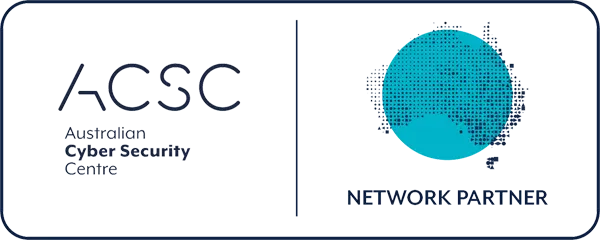Introduction: Why Managing Cyber Risk Matters to Every Business Leader
When it comes to cybersecurity, it’s tempting to think, “This doesn’t really apply to us.” Maybe you believe your business is too small to be targeted, or that your IT team has it all under control.
This couldn’t be further from the truth. According to a 2023 study by the Australian Cyber Security Centre (ACSC), 43% of cyberattacks target small to medium-sized enterprises (SMEs), with many citing a lack of preparedness as their downfall.
But here’s the uncomfortable truth: cyber risks don’t discriminate. From global corporations to local businesses, the same questions apply:
- Do you know the assets critical to your business?
- Are you aware of the compliance requirements tied to your industry?
- Have you assessed the risks, both financial and operational, of a potential cyberattack?
If you’re unsure about the answers to any of these, you’re not alone. Many business leaders feel the same. That’s why we’re launching this series, “Managing Cyber Risk.” Over the coming weeks, we’ll guide you through the cybersecurity lifecycle: Identify, Protect, Detect, Respond, and Recover—helping you take control of your organisation’s security.
We start today with the foundation of it all: Identify.
What Does “Identify” Mean for Your Business?
The Identify phase is about gaining clarity—understanding what you have, what’s at risk, and what you need to protect. This isn’t just a technical exercise; it’s a strategic business imperative.
Let’s think about it this way:
- If your data was stolen tomorrow, what would it cost your business?
- If a critical system went offline, how long could you operate?
- If a regulatory body audited your business, would you meet compliance standards?
Identifying risks is about ensuring your business can survive and thrive in an increasingly connected world. It starts with asking the right questions.
Key Areas to Identify:
- Your Critical Assets
Every business depends on assets—data, systems, and people—that keep operations running. -
- Data: Customer records, financial information, trade secrets.
- Systems: Cloud platforms, on-premises servers, third-party tools.
- People: Employees, vendors, and anyone with access to your systems.
Have you mapped these assets? Do you know which ones are most critical to your success?
- Compliance Requirements
Did you know that even small businesses are subject to industry regulations?
-
- The Australian Privacy Act requires businesses to protect customer data.
- Financial advisors, even small ones, must comply with APRA CPS 234 standards.
- The Essential Eight provides a cybersecurity baseline, but are you aligned?
Overlooking compliance isn’t just risky—it can lead to fines, reputational damage, and lost trust.
- Risk Assessment
Every asset comes with risks. Have you evaluated them?
-
- Likelihood: How likely is a cyberattack on this asset?
- Impact: What would it cost your business if this asset was compromised?
For example, think about your customer database. If it’s exposed, what would the fallout look like—financially and in customer trust?
- Financial Resources
Cybersecurity isn’t free, but it doesn’t have to break the bank either. By identifying your highest-priority risks, you can allocate resources wisely. Think of it as investing in the resilience of your business.

A Lesson from the JPMorgan
In 2014, JPMorgan Chase suffered a breach that compromised the personal data of 76 million households and 7 million small businesses. The cause? A single server was overlooked during a security upgrade and lacked two-factor authentication (2FA).
This simple oversight cost the bank an estimated $1 billion in damages, including reputational harm and regulatory scrutiny. The breach wasn’t due to a lack of resources but a failure to fully identify and secure all critical assets.
This example underscores the importance of comprehensive identification: a missed asset can lead to catastrophic consequences.
How MSA Helps You Identify Risks
At Managed Services Australia, we make the Identify phase simple for your business. Through our vCISO (Virtual Chief Information Security Officer) service, we:
- Map out all your assets and vulnerabilities.
- Assess your compliance obligations to avoid regulatory surprises.
- Perform a thorough risk assessment to help you focus on what matters most.
- Build a roadmap tailored to your organisation’s needs and goals.
Using proven frameworks like NIST CSF, ISO 27001, and the Essential Eight, we provide clarity and confidence to business leaders.
Why Identification Is a Business Imperative
Failing to identify your risks is like running a business without knowing your inventory or cash flow—it’s unsustainable. On the other hand, clear identification empowers you to:
- Protect what matters most.
- Make informed decisions about resource allocation.
- Align cybersecurity efforts with your business goals.
This isn’t just about avoiding cyber threats—it’s about creating a resilient, future-ready organisation.
Conclusion: Take Control Today
The Identify phase is the foundation of managing cyber risk. It’s about understanding your environment so you can make smarter, safer decisions.
In the next part of this series, we’ll dive into Protect—how to safeguard the assets and risks you’ve identified.
Visit our website at Managed Services Australia to learn more about our services and discover how we can help your business stay one step ahead of IT.
Dial 1300 024 748, shoot us an email at [email protected], or schedule a session with one of our IT specialists.






